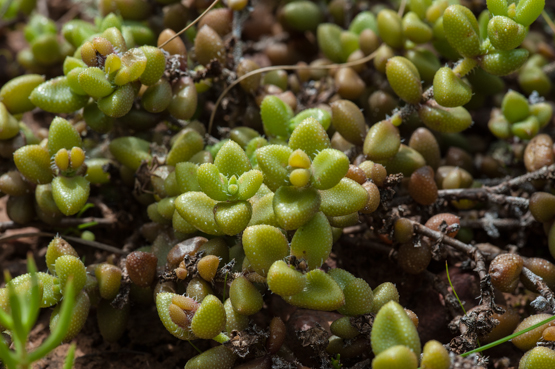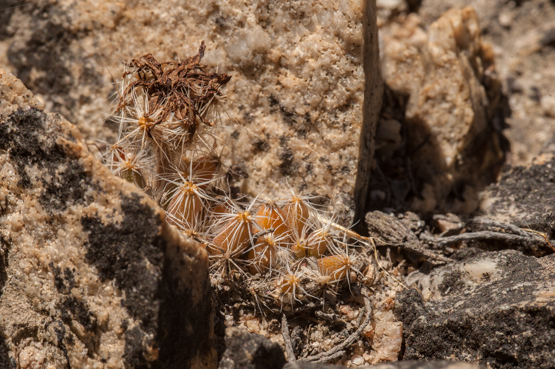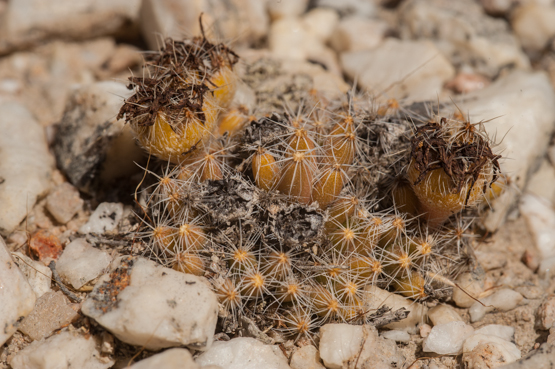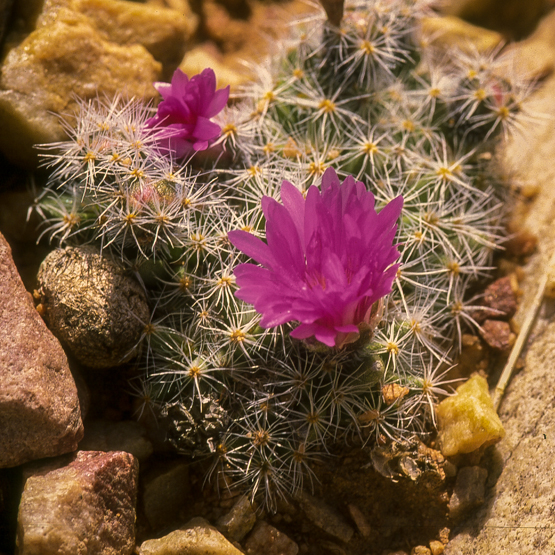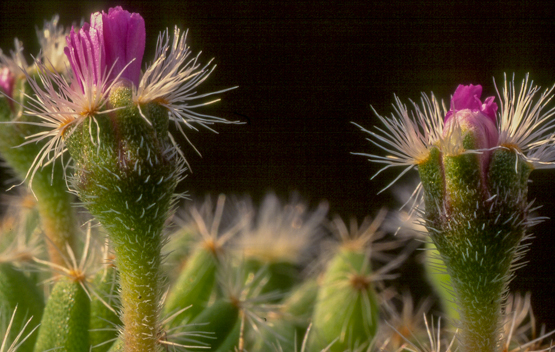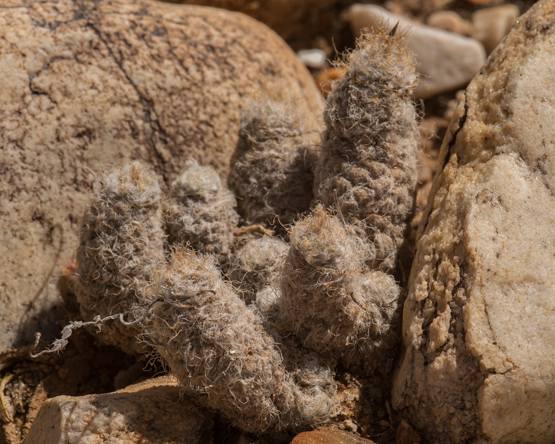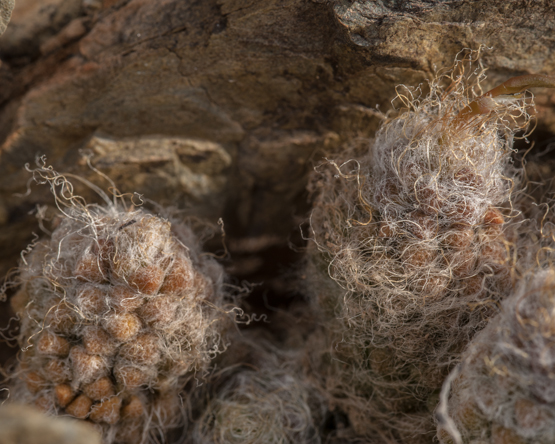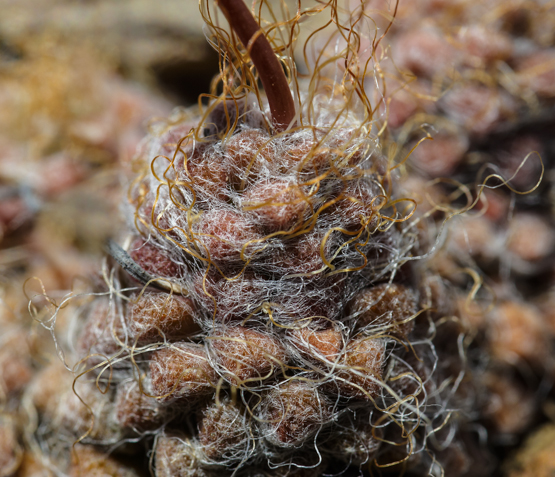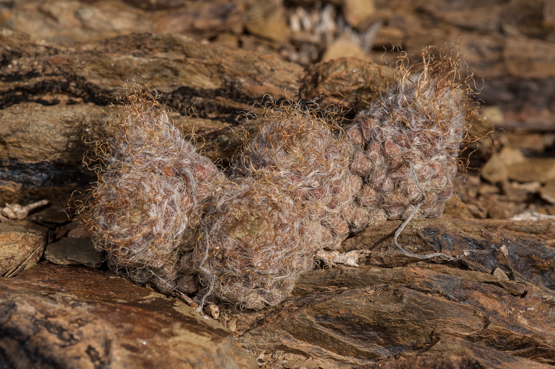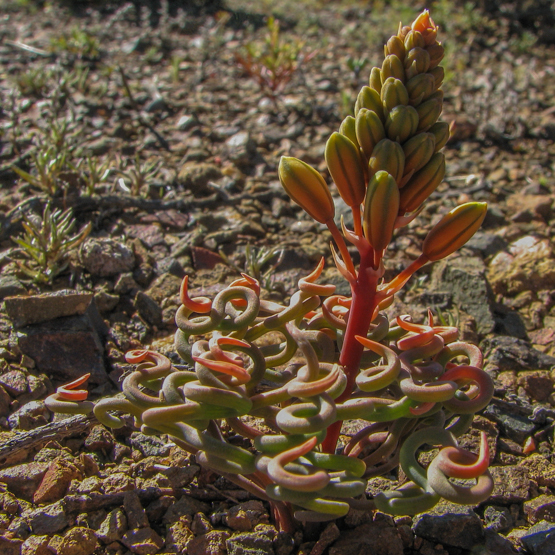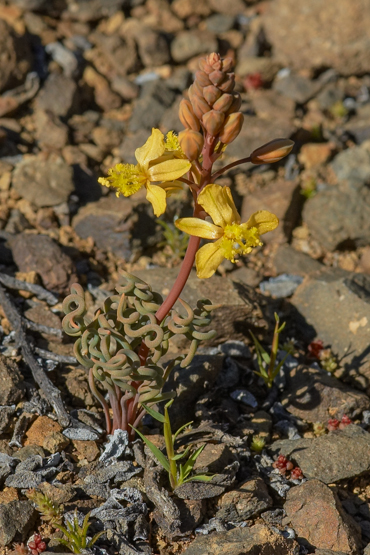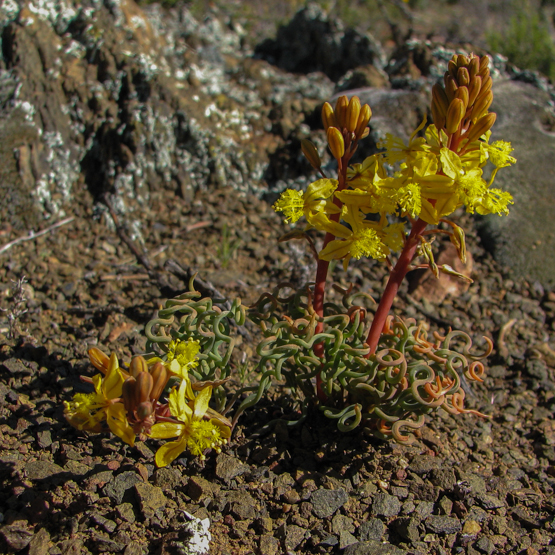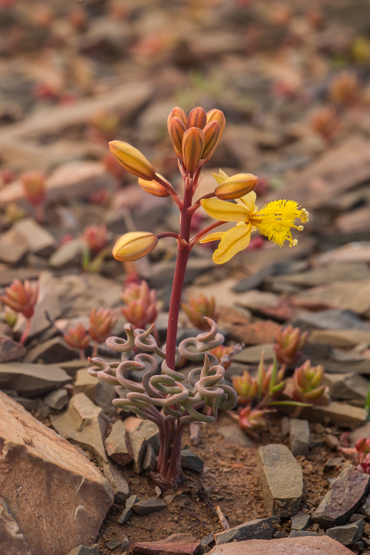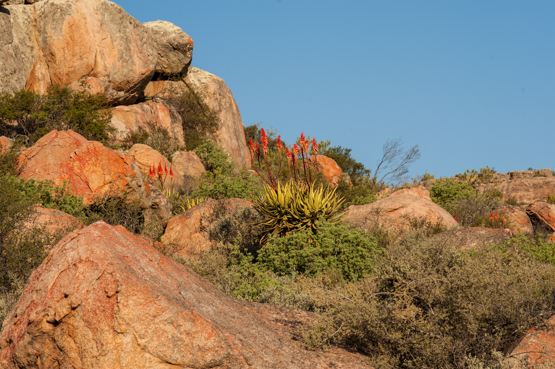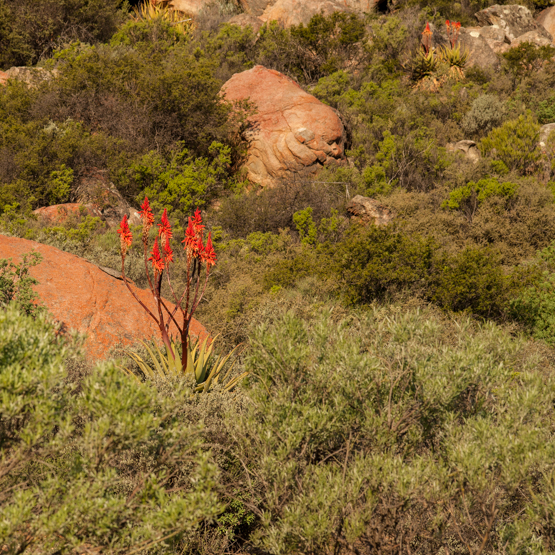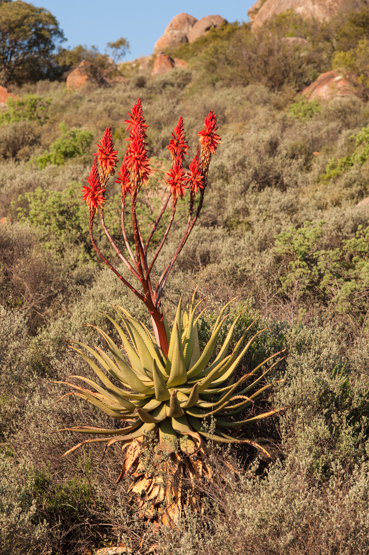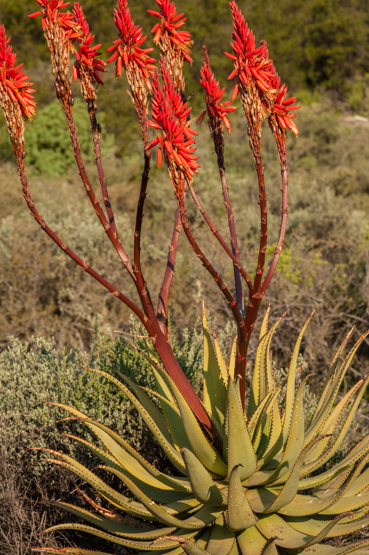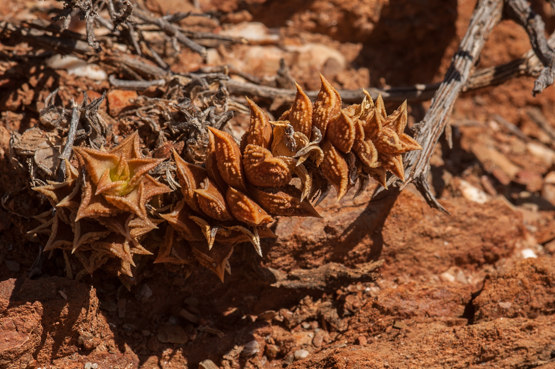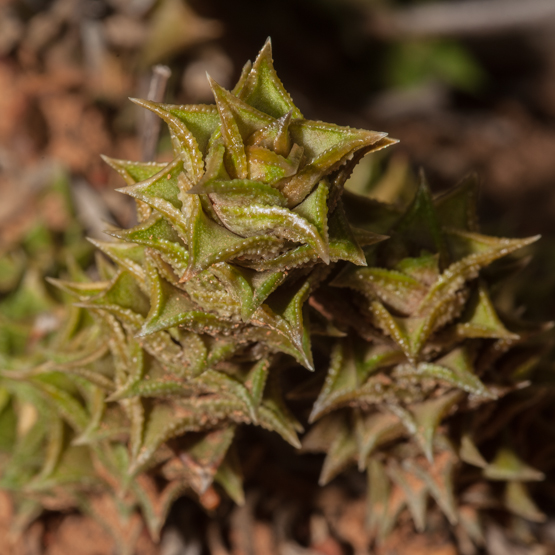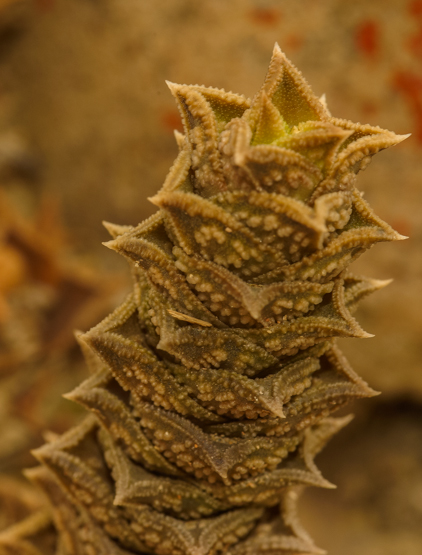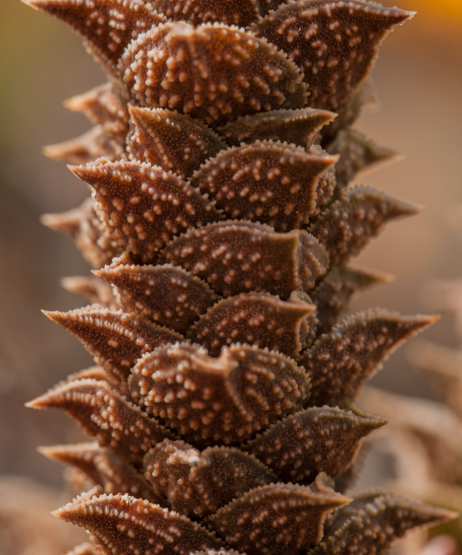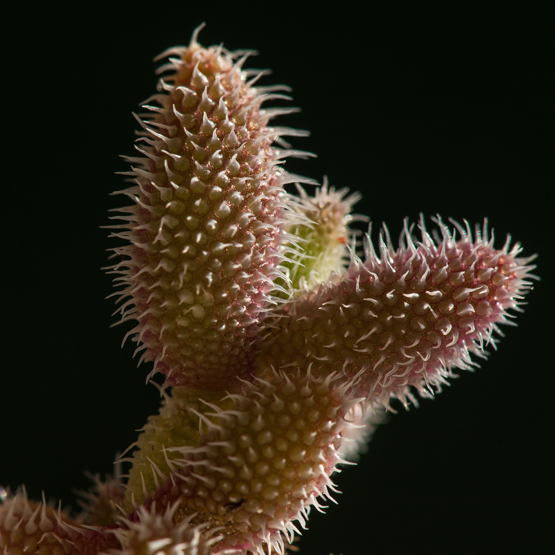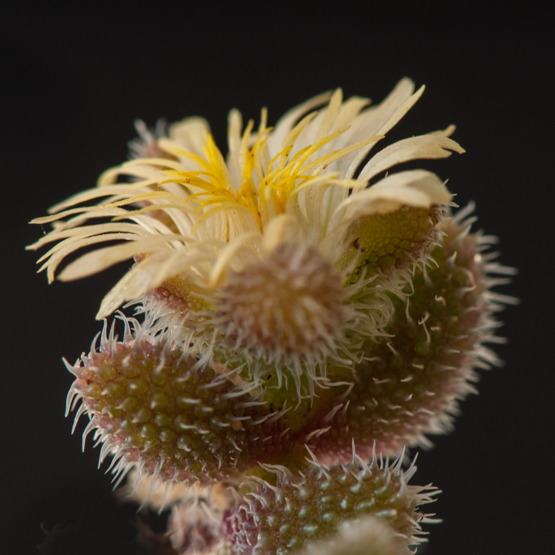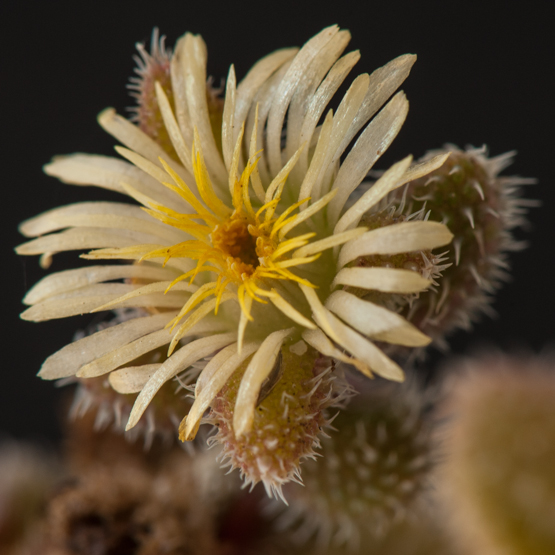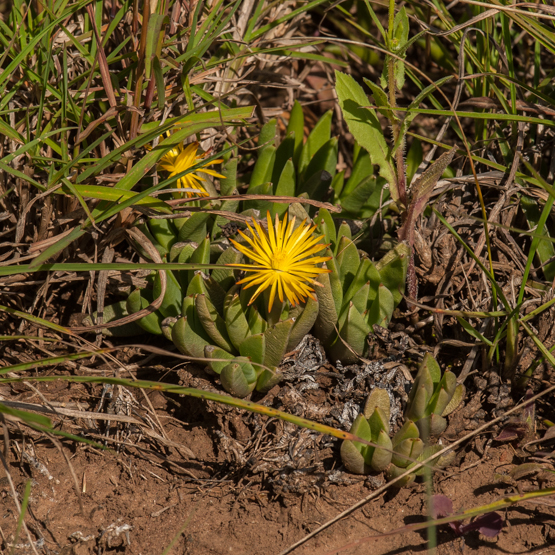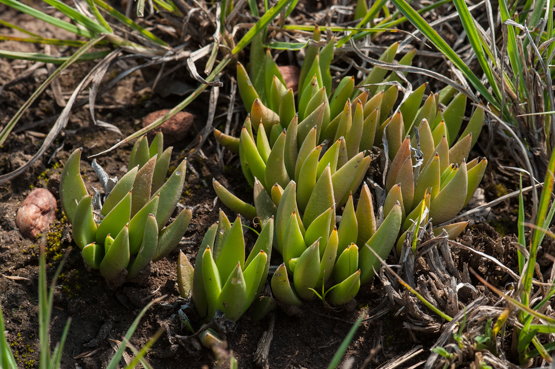When I started growing succulents nearly sixty years ago (I can hardly believe it myself) this species was one of the first I encountered in a collection. It was very popular because of its beautiful leaves and its ease of cultivation. The fact that it did not need full sun -in contrast to most other succulents- was also much appreciated. A number of years ago the species got a new (or in fact an old) name: D. pruinosum. And look and behold, by the time we all had got accustomed to this one, the name was changed back to echinatum. Not that it is of any scientific importance of course, but that name, meaning with spines like a hedgehog, is a much more agreeable one. The hard papillae on stems and leaves are unique in the genus.
The plants occur as undergrowth in Valley Bushveld in the Eastern Cape, sometimes straggling into other shrubs. The flowers are 1.5-2 cm across and yellow or whitish. They appear mostly in spring, but also at other times of the year.
The photos in this post were made near Uitenhage on 26 October 2012. In the first picture you can also see Senecio radicans and a seedling of Aloe striata.

